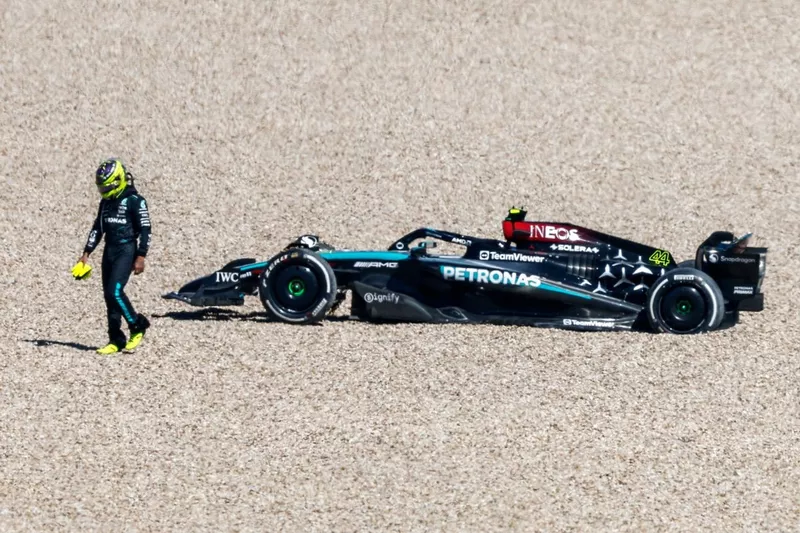Lewis Hamilton and Mercedes are both grappling with a difficult season as they near the end of their 12-year partnership, and recent results have highlighted just how challenging things have become. Last weekend in Brazil, Hamilton’s performance was far from where he or his team hoped to be, with a 14th-place qualifying result and a 10th-place race finish, while his teammate George Russell was fighting for victory. Hamilton didn’t hold back in expressing his frustration, calling the race “the worst” of the year and lamenting the car’s underperformance.
Following the Brazilian Grand Prix, Hamilton’s comments over the radio raised eyebrows as he referred to the race as a “disaster” and thanked his team for their efforts. His words led some to speculate about his future in Formula 1, but it seems clear that his remarks were more about the end of a challenging season rather than an indication of retirement. The struggles with his car’s handling have been ongoing, with Hamilton’s confidence in the vehicle’s rear stability eroding as the season has worn on, especially since the summer break. This loss of confidence has impacted his performance, creating a cycle of issues with tire temperatures and balance that’s been hard to break.
The issues Mercedes and Hamilton are facing with their car aren’t completely new. This season’s Formula 1 cars are built with ground-effect technology, which demands a rigid setup close to the ground, creating challenges for drivers, particularly when the balance isn’t stable. Hamilton, known for his precision driving, finds the unpredictability of the car’s rear end unsettling, which leads to additional tire wear and temperature problems, further diminishing his ability to push the car to its limits. As Andrew Shovlin, Mercedes’ head of trackside engineering, explained, Hamilton’s setup struggles stem from a lack of rear grip that’s hard to diagnose and address in the current car.
Further complicating matters is Mercedes’ recent upgrade, which, while boosting speed, has also introduced some instability. This lack of control was evident during the U.S. Grand Prix, where Hamilton and Russell both encountered difficulties with qualifying crashes and race exits. The car’s weakness in handling slow-speed, interconnected corners has been an ongoing challenge for Mercedes, and this latest upgrade hasn’t completely solved it. The Brazil circuit, with its demanding sequence of slower turns, seemed to exacerbate this problem, making it a particularly tough race for Hamilton and his team.
Despite the struggles, there’s still a sense of hope, especially as Russell’s performance hints at the car’s potential when conditions align. With high-speed tracks like Qatar up ahead, Mercedes may have a chance to showcase more of the car’s strengths, which could allow Hamilton to perform better in the remaining races. Determined to find solutions, Hamilton has been working closely with his team at the factory, spending time with engineers and in the simulator to prepare for upcoming races and hopefully find a setup that brings back his confidence in the car.
As the season heads toward its conclusion in Abu Dhabi, Hamilton and his team are doing all they can to overcome these hurdles. Acknowledging the challenges of recent races, Hamilton has committed to taking responsibility for his performance while pushing to maximize the car’s potential. With renewed focus, the team hopes to turn things around, but the upcoming races will reveal just how successful these efforts have been.

